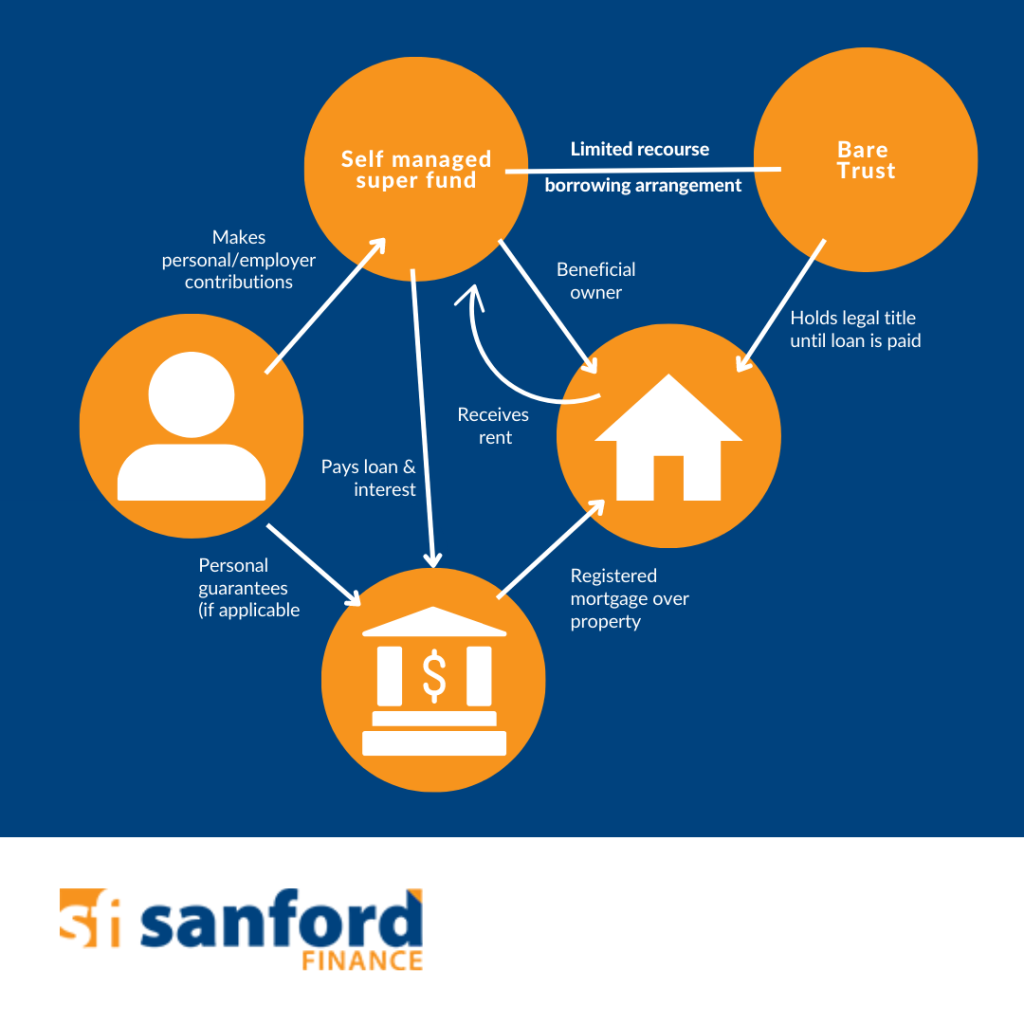What is a limited recourse borrowing arrangement? (LRBAs)
Limited recourse borrowing arrangements (LRBAs) are a type of borrowing structure that allows self-managed superannuation fund (SMSF) trustees to borrow money for the purpose of purchasing an asset, such as property or shares.
There are several parties involved in a Limited Recourse Borrowing Arrangement (LRBA), each with a specific role to play in the borrowing structure.

- SMSF trustee: The SMSF trustee is responsible for making investment decisions and managing the SMSF’s assets. In an limited recourse borrowing arrangement, the trustee is also responsible for entering into the borrowing arrangement and ensuring that the loan is used for a permissible purpose. The trustee is also responsible for ensuring that the loan is repaid on time and that the SMSF remains compliant with all relevant legislation and regulations.
- Lender: The lender is the entity that provides the loan to the self-managed super fund trustee. The lender may be a bank or other financial institution that specializes in providing SMSF loans. The lender’s recourse is limited to the asset purchased with the borrowed funds. This means that if the SMSF defaults on the loan, the lender can only take possession of the asset purchased with the borrowed funds, rather than pursuing the SMSF trustee for further payment.
- Custodian: The custodian is a separate legal entity that holds the asset purchased with the borrowed funds on behalf of the self-managed super fund. The custodian is a crucial component of an LRBA, as it ensures that the asset is held separately from the SMSF’s other assets, and that the lender’s security interest is registered against the asset.
- Bare Trustee: The bare trustee is another separate legal entity that holds the legal title to the asset purchased with the borrowed funds on behalf of the self-managed super fund. The bare trustee is a passive entity that does not have any decision-making power, and its only function is to hold the asset on behalf of the SMSF.
How an LRBA Works:
- Separate Trust Structure: The property purchased through an LRBA is held in a separate trust (bare trust) until the loan is repaid. Once the loan is fully paid off, the property can be transferred to the SMSF.
- Limited Recourse: If the SMSF defaults on the loan, the lender can only recover the loan from the property itself, protecting other assets within the SMSF.
- Loan Restrictions: The borrowed funds can only be used to acquire a single acquirable asset, and any improvements to the property must be funded by the SMSF’s own resources, not through additional borrowings.
How Sanford Finance Can Assist
Investing in property through an SMSF requires careful planning and expert advice. At Sanford Finance, we help you navigate the complexities of SMSF property investment, ensuring you understand both the benefits and risks involved. Our team of experienced brokers will work with you to assess your financial situation, guide you through the compliance requirements, and connect you with the right lenders who specialize in SMSF loans.
Whether you’re considering purchasing your first SMSF property or looking to expand your existing portfolio, Sanford Finance is here to provide the expertise and support you need to make informed and confident investment decisions.
Ready to explore SMSF property investment? Contact Sanford Finance today to schedule a consultation with one of our expert brokers. We’re here to help you achieve your retirement goals through smart, strategic property investments.




